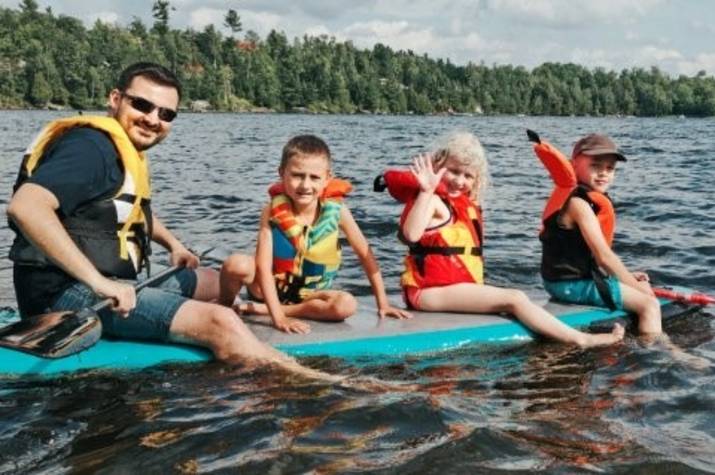Just the facts: water safety
By Rheanna Philipp

The Canadian Pediatric Society says that a lack of supervision is the greatest risk factor for drowning in children.
Image by Patricia Vasylchuk, RCMP
July 18, 2024
Content
As the summer season heats up, the number of drownings and accidents on the water increases. According to the Life Saving Society of Canada, the majority of people who drown have no intention of going in the water. This summer, refresh your knowledge with some basic facts on drowning, and simple safety tips and practices that could save lives. For the statistics below, we referenced Statistics Canada, the Life Saving Society, the Canadian Pediatric Society, the British Columbia Coroners Office, the Canadian Hospitals Injury Reporting and Prevention Program database, and the Canadian Vital Statistics Death database.
Drownings in Canada
- Drowning is the third leading cause of accidental death worldwide, preceded by unintentional poisoning, such as drug overdose, and motor vehicle accidents
- More than 450 people drown in Canada each year
- Between 2015 and 2020, there have been 1,768 drownings in Canada and nearly half of all cases happened in lakes or ponds in the same period
- Water-related deaths are most likely to happen between May and September, with nearly two-thirds happening during a recreational activity
- Nearly 80% of drowning victims are men
- Children aged nine or younger make up nearly 80% of drowning-related visits to hospital emergency departments
Swimming
The Canadian Pediatric Society says that a lack of supervision is the greatest risk factor for drowning in children under the age of five. It recommends swimming lessons for all children over four, and advises that confident swimming does not replace adult supervision. As well:
- In drownings of children, 97% of cases happen due to absent or distracted supervision
- A child can drown in as little as one inch of water
- Across all age groups, one-third of drownings happen when people are alone
- Between 2016 and 2020, 1% of drownings were in a setting supervised by a lifeguard
Boating and water sports
Whether on land or water, drug and alcohol-impaired driving is unsafe and illegal.
- 60% of boating incidents resulting in death involve alcohol
- Nearly 30% of water-related deaths of youth and adults involve alcohol
- Across all age groups, more than 80% of fatal drownings happen while people are not wearing a life jacket or Personal Floatation Device (PFD)
- According to Canadian regulations for small vessels, every boat in Canada, including kayaks and canoes, must have one Canadian-approved PFD per person on board
- Boaters with improper or inaccessible life jackets or safety equipment can be fined upwards of $200
- Life jackets provide insulation and heat, and help avoid cold water shock and hypothermia, which can happen in water temperatures of 21 degrees Celsius or colder
Water Safety Quick Tips
- Never swim alone; always bring a buddy
- Don't overestimate your swimming abilities
- Be aware of currents and strong waters
- Never dive headfirst into a body of water
- With children, don't rely on water wings, swim rings, and other inflatable toys to replace adult supervision
- Children should be kept within an adult's sight and reach at all times when in and around bodies of water
- Wear a lifejacket while boating or doing water sports
- Always have a spotter in the boat when towing someone during water sports
- If you have a pool, secure it with appropriate barriers to prevent unsupervised access to the water
- Learn cardiopulmonary resuscitation (CPR)
- Learn to swim - it's never too late